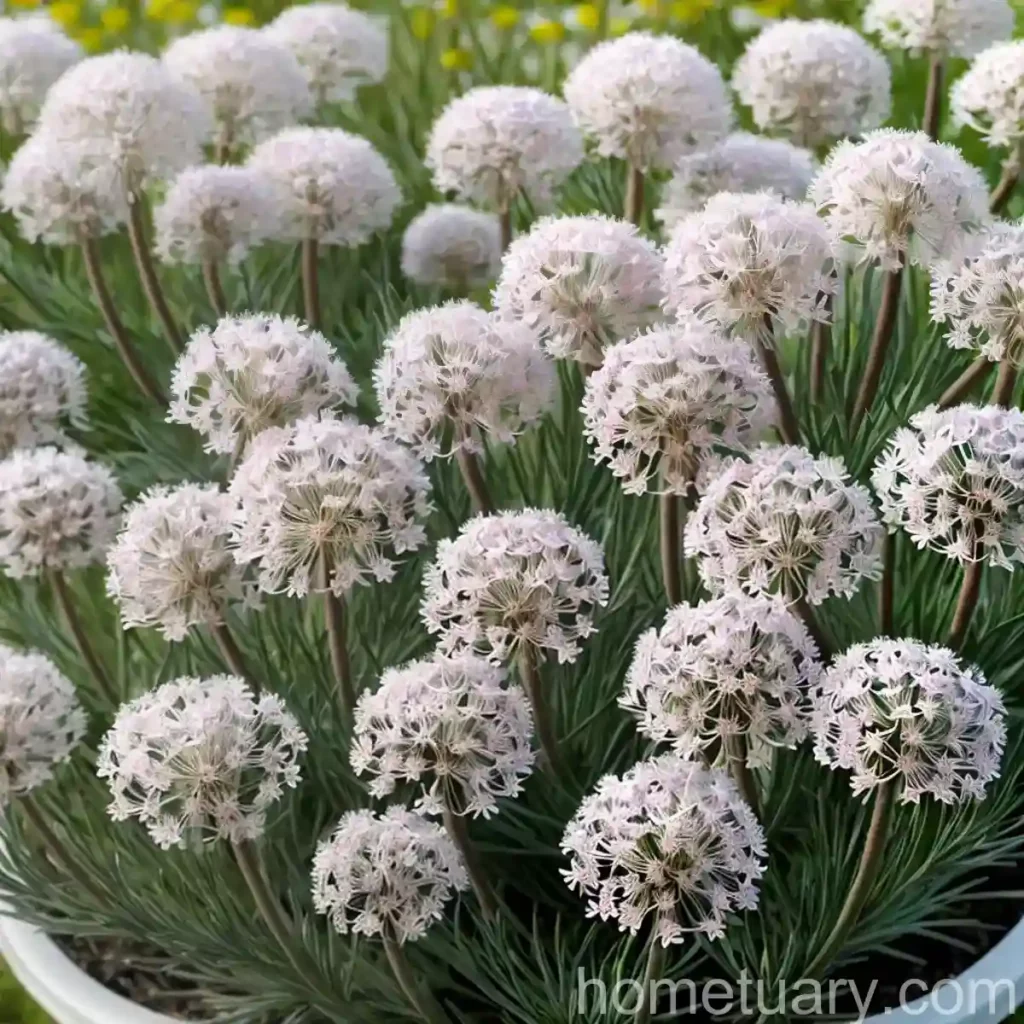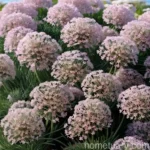Sea Thrift (Armeria maritima ‘Morning Star White’)
Sea thrift, scientifically known as Armeria maritima ‘Morning Star White’, is a charming perennial plant that adds a touch of elegance to any garden. This plant is renowned for its captivating white flowers and its ability to thrive even in coastal and rocky environments. In this comprehensive guide, we will delve into the key aspects of sea thrift, including its culture, uses, maintenance, and more. Whether you are a seasoned gardener or a newcomer to the world of horticulture, this article will equip you with valuable insights into successfully cultivating and caring for sea thrift.

What is Sea Thrift?
Sea thrift, also known by its botanical name Armeria maritima, belongs to the Plumbaginaceae family and is indigenous to coastal regions of Europe and Asia. This charming plant is celebrated for its tufted foliage and globe-shaped flower clusters that bloom in delicate shades of pink, red, or white. Its resilient nature allows it to thrive in various conditions, making it a popular choice for gardeners seeking an attractive and low-maintenance addition to their outdoor spaces.
Key Takeaways
Sea Thrift (Armeria maritima ‘Morning Star White’)
- Scientific Name: Armeria maritima ‘Morning Star White’
- Family: Plumbaginaceae
- Common Names: Sea Thrift, Sea Pink
- Plant Type: Perennial
- Bloom Time: Spring to early summer
Now, let’s explore the specific aspects of caring for sea thrift, including culture, uses, water requirements, sunlight preferences, fertilizer needs, soil conditions, pruning, propagation, container gardening, common diseases, pest management, botanist’s tips, and fun facts about this alluring plant.
Culture
Cultivating sea thrift requires an understanding of its specific preferences and needs. By providing the optimal cultural conditions, you can ensure that this charming plant thrives and flourishes in your garden.
Uses
Sea thrift offers a multitude of uses in garden landscapes, including:
- Rock Gardens: Its compact size and vibrant flowers make it an ideal addition to rock gardens.
- Coastal Plantings: Given its natural habitat, sea thrift is well-suited for coastal landscaping.
- Pollinator Gardens: The nectar-rich blossoms of sea thrift attract pollinators such as butterflies and bees.
Water
Sea thrift is moderately drought-tolerant once established. However, it is essential to provide consistent moisture, especially during the establishment phase and in periods of prolonged drought.
- Watering Needs: Regular, consistent moisture is beneficial, particularly during the plant’s growing season.
- Establishment: Adequate watering is crucial during the initial establishment period until the plant’s root system is well-established.
Sunlight
This perennial plant thrives in full sunlight and is relatively unfazed by intense coastal winds, making it an excellent choice for gardens in coastal and windy areas.
- Sun Exposure: Full sun
- Coastal Conditions: Sea thrift displays remarkable resilience in coastal environments, thriving in the face of salt-laden winds and intense sunlight.
Fertilizer
Sea thrift is not particularly demanding when it comes to fertilizer. A modest application of a balanced, slow-release fertilizer once a year can provide the necessary nutrients for healthy growth and vibrant blooms.
- Fertilizer Type: A balanced, slow-release fertilizer is suitable for sea thrift.
- Application Time: Apply fertilizer in early spring as new growth begins to emerge.
Soil
The soil plays a pivotal role in supporting the growth and vitality of sea thrift. Here are key soil considerations for cultivating this charming plant:
- Well-Drained Soil: Sea thrift thrives in well-drained, slightly alkaline soils.
- Sandy, Gravelly Soils: Its natural habitat in coastal regions underscores its preference for sandy and gravelly soils.
Pruning
Pruning sea thrift is a straightforward endeavor, and it is primarily conducted to remove spent flowers and encourage a tidy and compact growth habit.
- Pruning Time: Deadhead faded blooms throughout the blooming season to promote continued flowering.
- Post-Blooming: Give the plant a light trim after the blooming period to tidy up the foliage.
Propagation
Sea thrift can be propagated through various methods, including division, seed sowing, and stem cuttings. Each approach offers gardeners the opportunity to expand their sea thrift population and introduce its captivating beauty to new areas of the garden.
- Division: Divide mature clumps in late spring or early fall to create new plants.
- Seed Sowing: Collect seeds from mature plants and sow them in well-draining, sandy soil.
- Stem Cuttings: Take stem cuttings in late spring or early summer and root them in a suitable growing medium.
Container Popularity
The compact nature of sea thrift lends itself well to container gardening, allowing individuals with limited garden space to enjoy its captivating blooms.
- Container Size: Select a container that provides ample space for the plant’s root system to develop.
- Well-Drained Soil: Use a well-draining potting mix to ensure optimal soil conditions within the container.
Container Common Diseases
While sea thrift is generally resilient to diseases, certain conditions can predispose it to specific ailments. In container gardening, the following diseases may pose a threat to sea thrift:
- Root Rot: Overly moist, poorly-drained soil can lead to root rot in container-grown sea thrift.
- Powdery Mildew: Humid conditions and poor air circulation may foster powdery mildew development.
Disease Diagnosis
Diagnosing diseases in sea thrift involves attentive observation and proactive management to mitigate the impact on the plant’s health.
- Symptoms: Tissue discoloration, wilting, and abnormal growth are indicators of potential diseases.
- Prompt Action: Address any signs of disease promptly to prevent its spread and impact on the plant’s vigor.
Common Pests
Sea thrift is relatively resistant to pests, but certain insects may still pose a threat to its well-being.
- Aphids: These soft-bodied pests may feed on the plant’s sap, causing damage to the foliage.
- Slugs and Snails: These creatures may feed on the tender foliage and flowers of sea thrift, necessitating pest management measures.
Botanist’s Tips
Enhance your sea thrift cultivation endeavors with insights from experienced botanists:
- Companion Plants: Pair sea thrift with other coastal plants such as lavender and sea holly for a striking display.
- Naturalizing: Introduce sea thrift to naturalistic garden settings to create effortless, low-maintenance beauty.
Fun Facts
Delve into the intriguing aspects of sea thrift with these captivating fun facts:
- Symbolism: In the language of flowers, sea thrift symbolizes strength and resilience, a fitting representation of its coastal origins.
- Traditional Uses: Sea thrift was historically utilized for its medicinal properties, with preparations made from its roots and leaves.
Links to External Resources
Expand your knowledge and appreciation for sea thrift by exploring these external resources:
By delving into the intricacies of sea thrift, we uncover a plant that embodies resilience, elegance, and adaptability. Whether adorning coastal cliffs or enlivening garden borders, sea thrift stands as a testament to the enduring beauty of nature. With its captivating blooms and undemanding nature, it continues to captivate the hearts of gardeners worldwide. Embrace the allure of sea thrift and discover the joy of cultivating this coastal gem in your own outdoor oasis.















